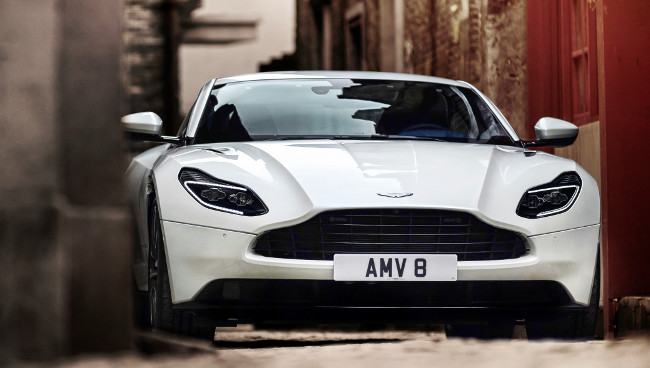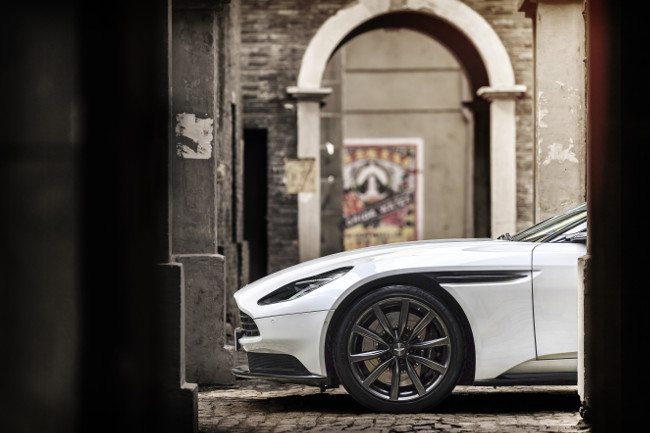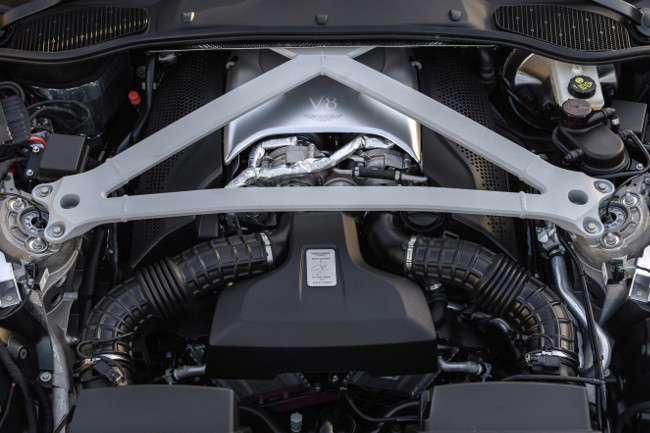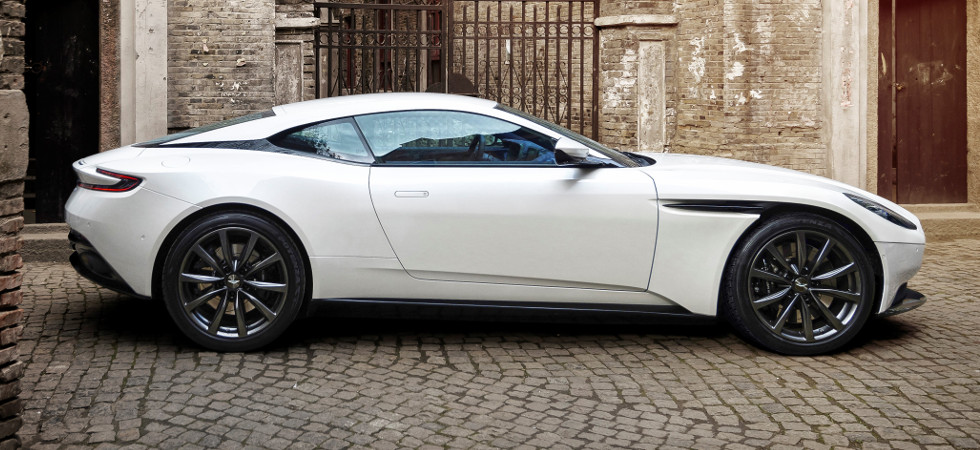Words and images by leading motoring writer Mark Gallivan
Up to last year the Aston Martin DB11 had successfully solved the biggest problem with the ageing DB9 – it drove exactly like a modern Aston Martin should. It’s inarguable that the DB9 remains one of the most beautifully proportioned GT coupes that money can buy. That said, it was ageing with mechanicals and an interior that had well and truly been leapfrogged by rivals with massive budgets and limitless parts sharing capabilities. Once its DB11 successor arrived, you had a car that could confidently take on the rivalling establishment and hold its own. This was heavily influenced by Mercedes-AMG taking a 5% stake in Aston Martin in 2013 agreeing to supply engines and crucially vastly improved electrical systems. Step inside a DB11 and there are no longer any excuses to be made. The Mercedes-AMG sourced navigation and entertainment systems operate with an immediacy and depth of quality that impress.

The £157,900 DB11 V12 is also a vastly improved Aston to drive every day. A significant part of this was due to Matt Becker who left Lotus for Aston Martin in 2015 assuming the wonderfully titled role as Chief of Vehicle Attribute Engineering. Becker’s back-catalogue of Lotus cars that received his chassis turning skills include the Lotus Elise and Evora, concentrating on critical chassis items like the rear-axle set-up and the importance that chassis electronics play in a car’s composure. All of this funnelled talent is available to experience in the DB11 – it is, by a large margin, most convincing GT that the British company has made. Where a DB9 keeps you on your toes by never truly settling down, the car with 11 in its name is now a proper world-beater. Your choice of one, was dead easy.
Only that appeared to be the case when production of the DB11 started in September 2016 with a V12 engine. Now the decision is no longer as obvious. I’ve been testing the newly launched DB11 V8 priced at £144,900 through Charles Hurst Aston Martin in Belfast and one question came to mind – does the V8 with four fewer cylinders (and the not to sneezed at £13,000 less) match the V12 version or possibly beat it as the best Aston Martin DB11 on sale now?
First off, you’ll need to know how to spot a V8 version over the virtually identical to the V12 car. Visual giveaways are two instead of four bonnet intake vents on the one-piece cover, dark grey headlamp bezels. Inside the only difference I spotted was the knobs that move the air vents are now a black instead of silver and the throws of the gear paddles behind the gearlever have been reduced by 50% over the V12 car.

Walking up to the DB11 – any DB11 – makes you feel supremely successful, special even, in a way that no Porsche Turbo or Audi R8 V10 can communicate. If you’ve already driven the DB11 V12 for an extended period you’ll have experienced the car’s cool demeanour mimicking a suave five-star Swiss Spa – the V12 settles down immediately into any early morning urban crawl and feels properly poised, fully capable of being steered towards any cross continental dash. Jump into the 4.0-liter V8 with 505bhp from the Mercedes-AMG derived engine – albeit with resolute Aston Martin tweaks – serves up a different personality. Firstly, the V8 engine is the same one that sits in a Mercedes C63S and AMG GT and generates a guttural growl far lower down the torque band. This was achieved by focusing on the car breathing and how the exhaust gasses are emitted.
Changes were made to the engine management system as well changing the throttle response making the V8 DB11 a wide-eyed puppy up and ready for a sneaky back roads blast. There are three driving modes activated by a switch on the right of the steering wheel – GT, Sport and Sport Plus. To underline the V8’s sportier characteristics, Sport and Sport Plus modes now emit the DB11’s trademark growling and exhaust popping that hitherto was only available in Sport Plus mode in the V12. The V8 feels lighter at the front too, with 115kg shaved off the V12’s weight resulting in welcome changes to how the car changes direction making it more nimble, exploiting the car’s brilliantly tuned chassis with a 49/51% weight distribution. One criticism of the DB11 V12 car was slightly grabby brakes and work was done to make them more progressive in the V8 – although it’s not something I levelled at the V12 that previously spoiled the fun in any way.
The differences in performance are minimal. The DB11 V8 gets from 0-60 mph in 4 seconds (just 0.1 second slower than the V12) and the top speed is 187mph versus the V12’s magical but irrelevant 200mph target.

In the end, the £13,000 price difference will never sway to buyers choosing an Aston Martin. What might sway them will be the V8 playfulness and personality that will suit buyers wanting to drive their Aston Martin to work in the morning – it’s an impressively refined long-distance GT – and a weekend sports car with practicability that will growl and bark with a sense of fun that the Vantage’s character was renowned for. Here’s my recommendation, drive both cars and make up your own mind – either are glorious. Though if it were my money, I’d be travelling home with the Aston Martin with an 8 in its name.
My thanks to Mike Gimson of Aston Martin Belfast for his help.






















